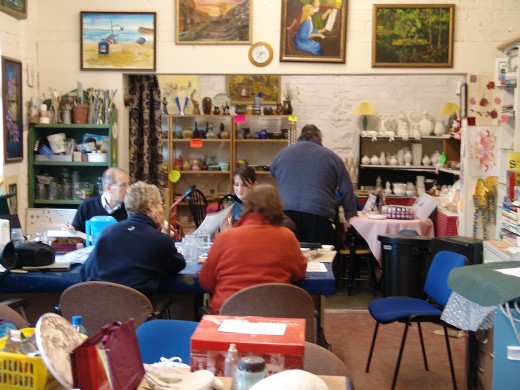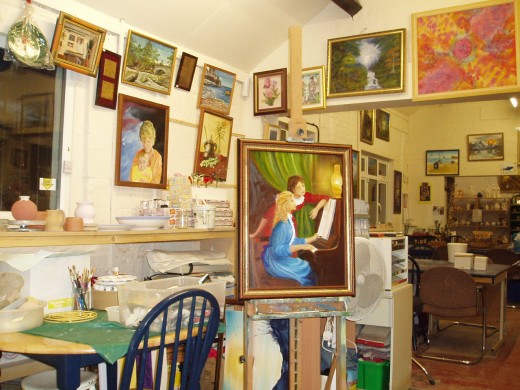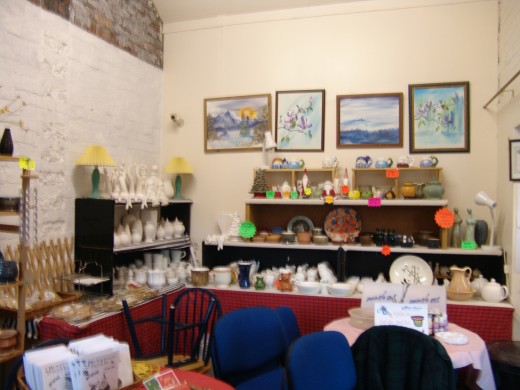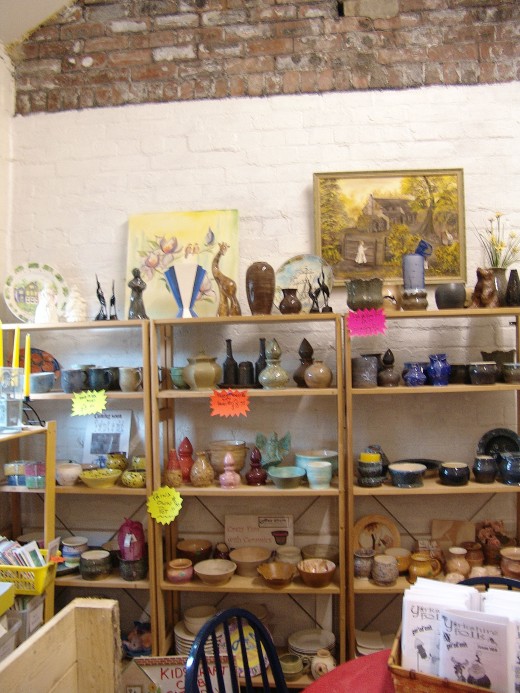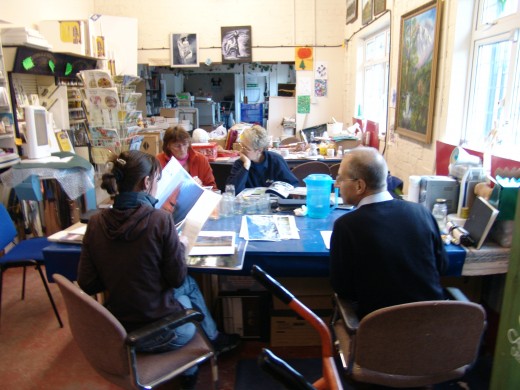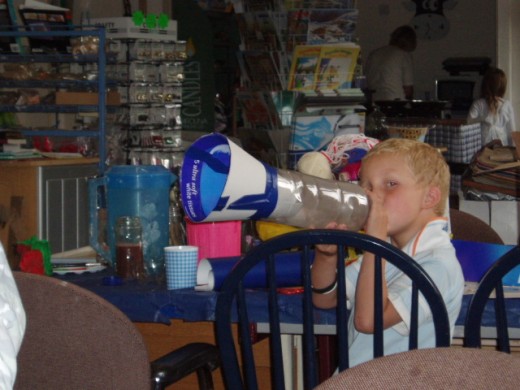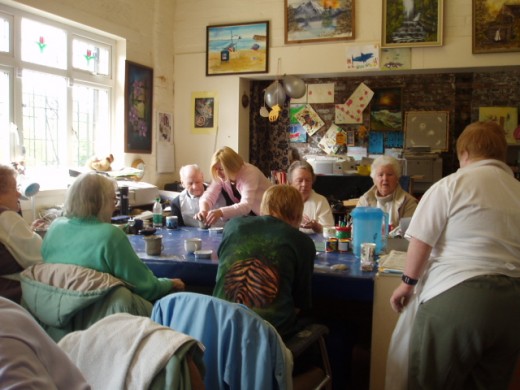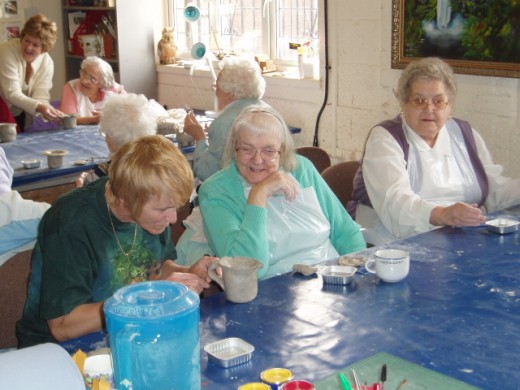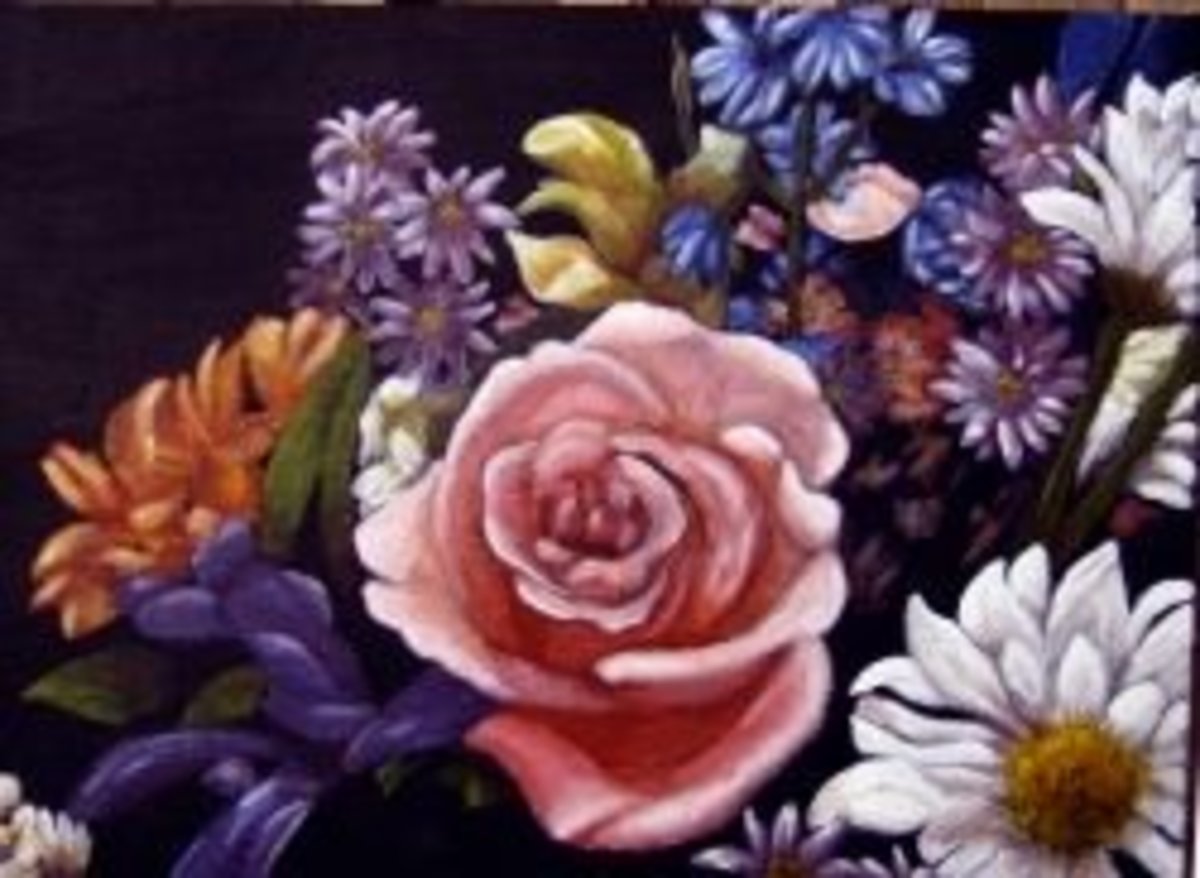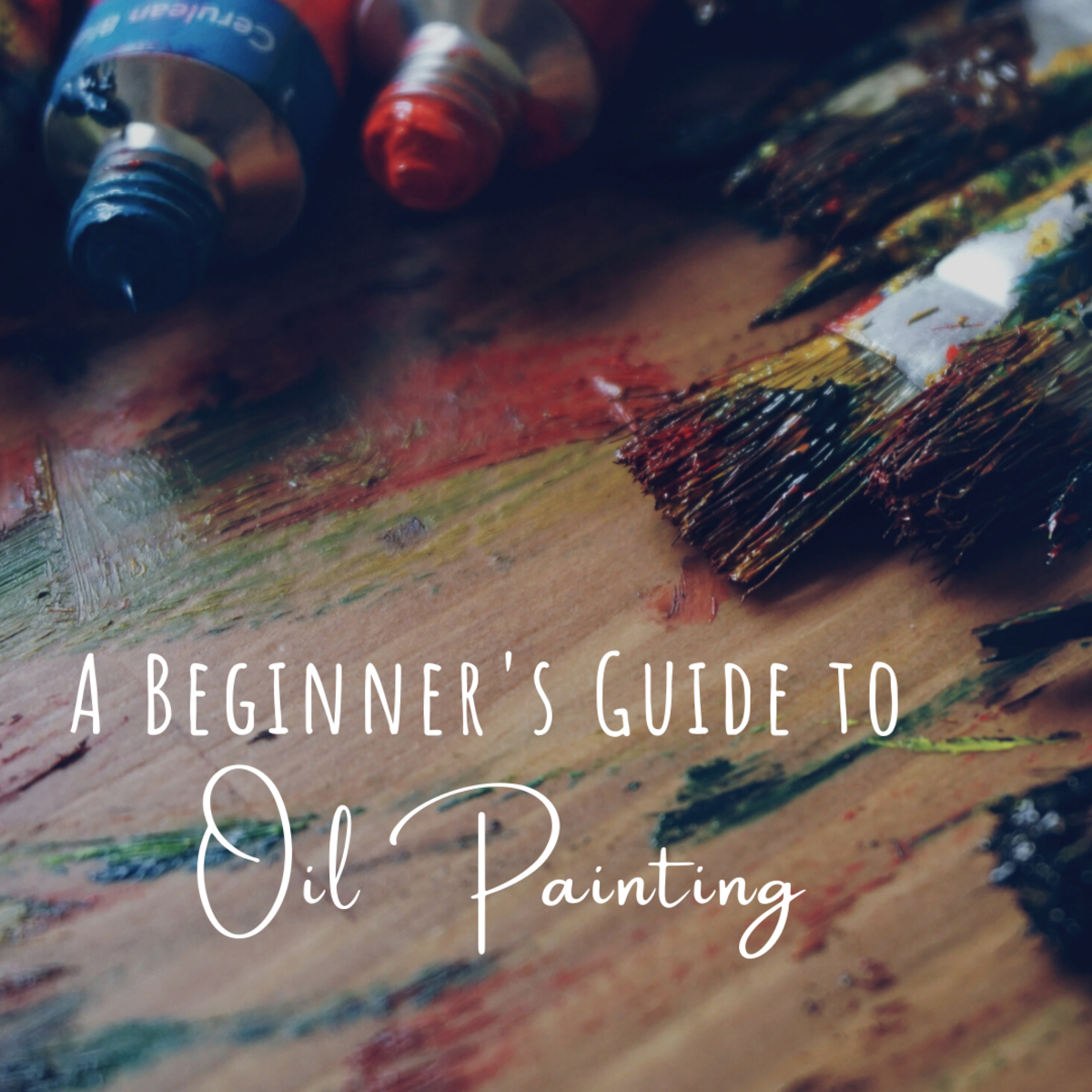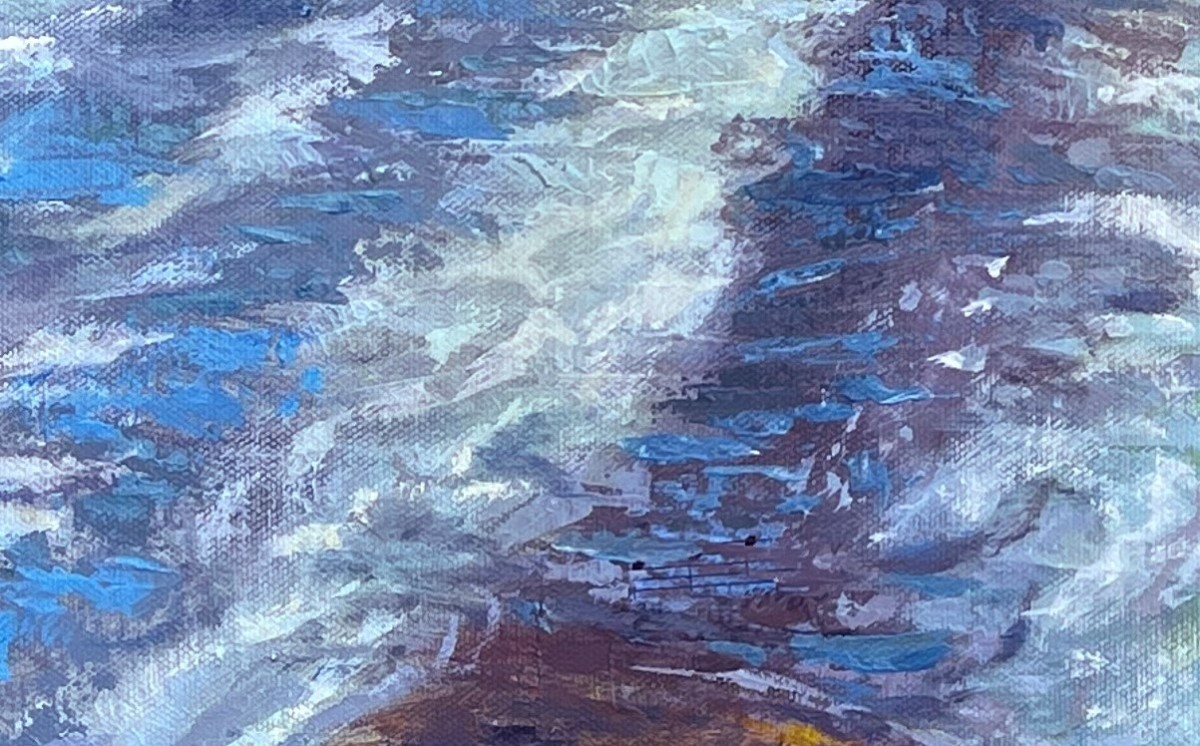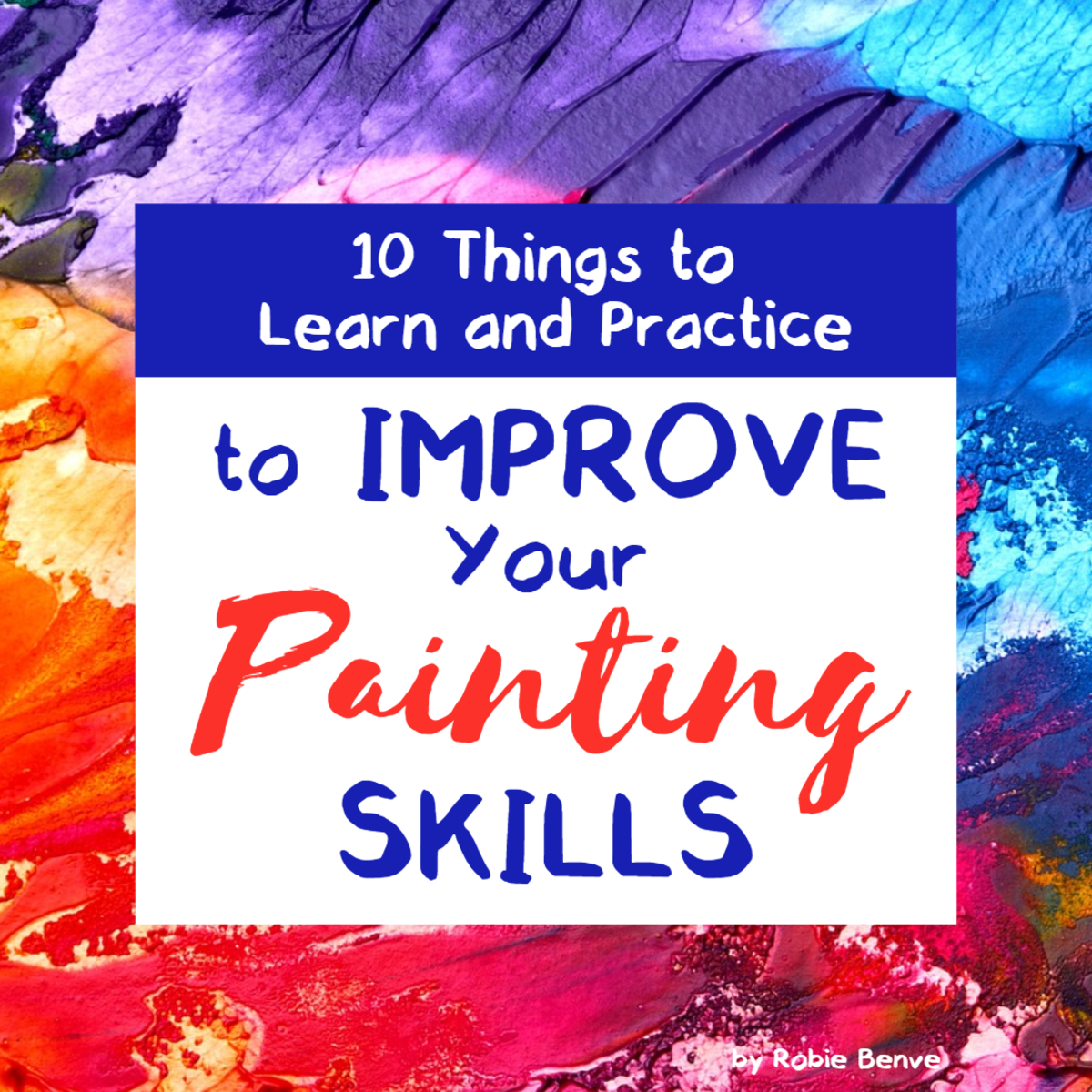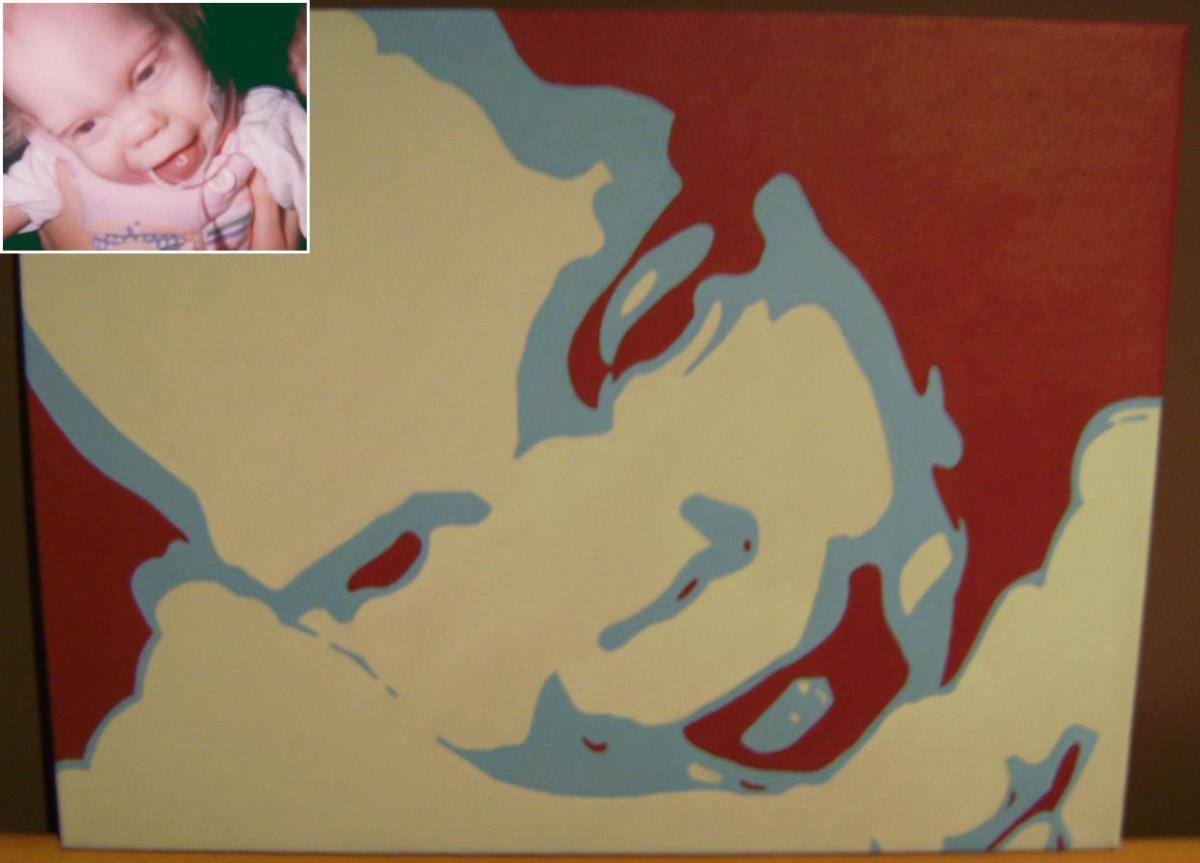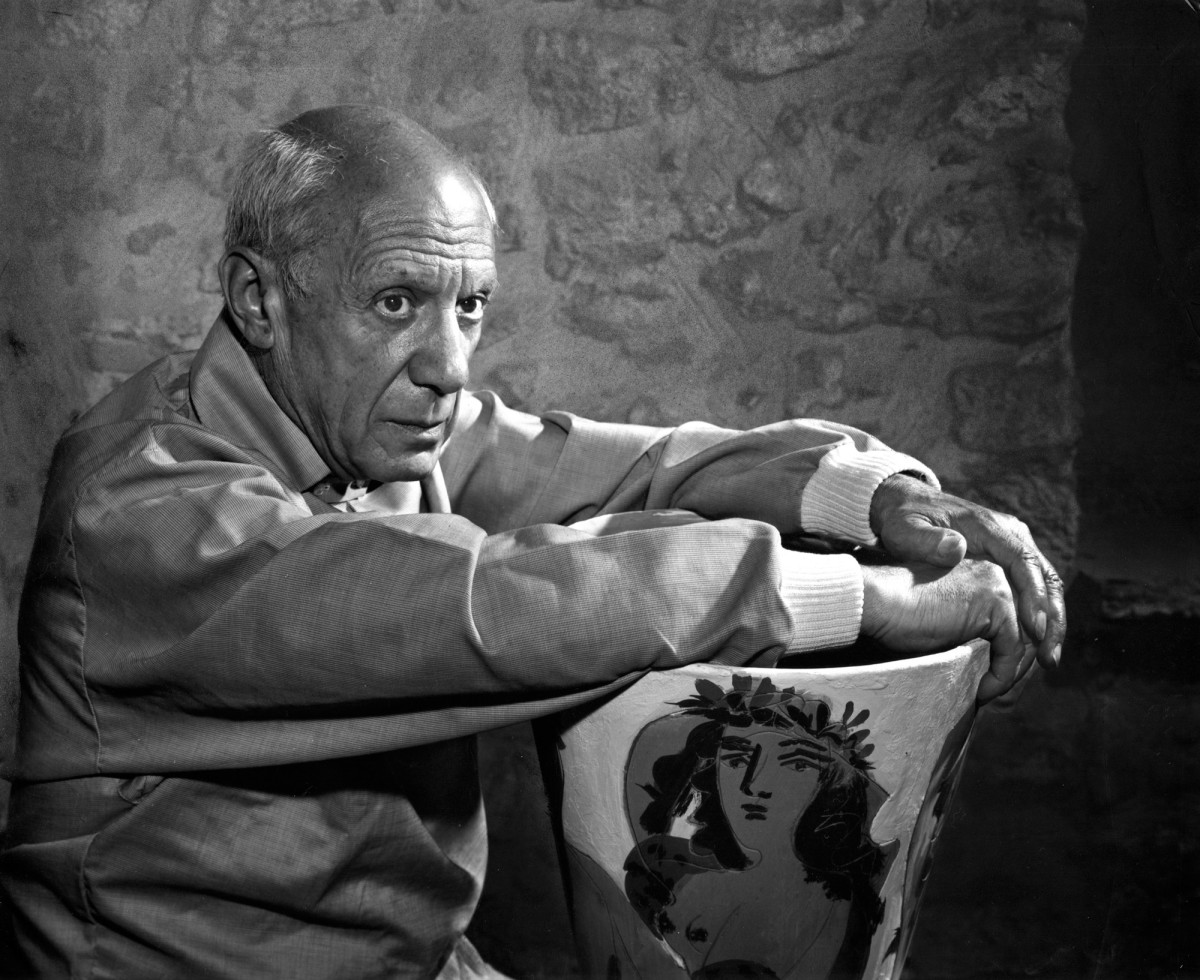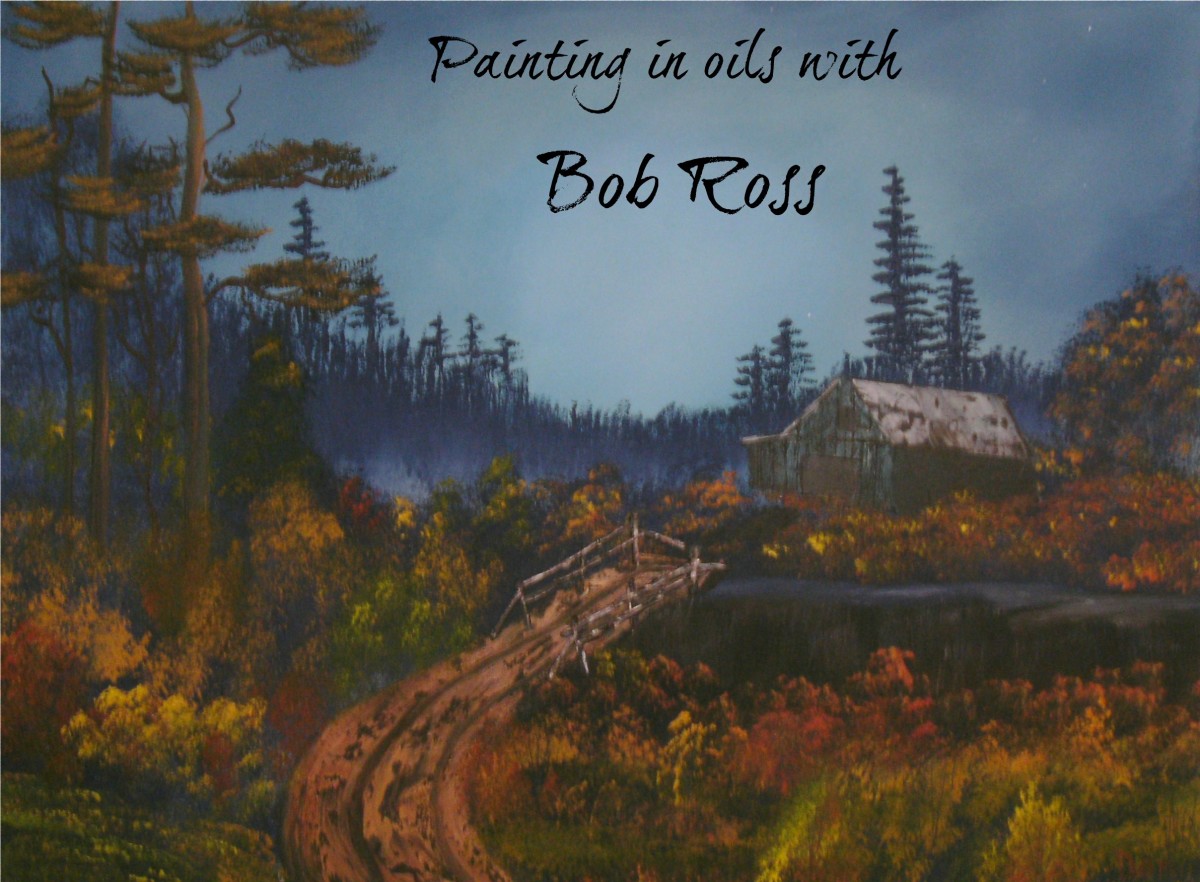How to begin and plan a new oil painting.
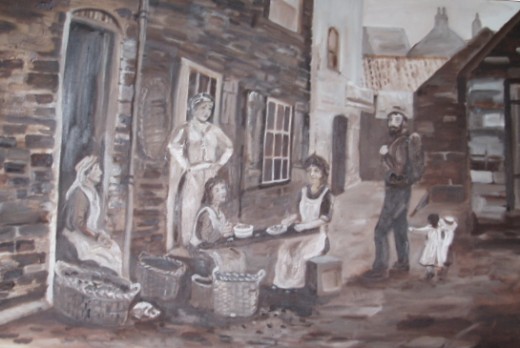
How to oil paint.
Making a start with an oil painting can be quite a daunting experience. Most opt for watercolours; I think people see them as an easier option, remembering their poster paint experiences of school.
There is no doubt that you really need a safe area to oil paint in, by safe I mean somewhere with good ventilation and where no one will brush past when you are not there and get paint on their clothes. It depends how big you are going to work, but you will need room for an easel of some description, I’ll come back to that.
Before we start, I’m going to give you brief look at what you will need.
Brushes
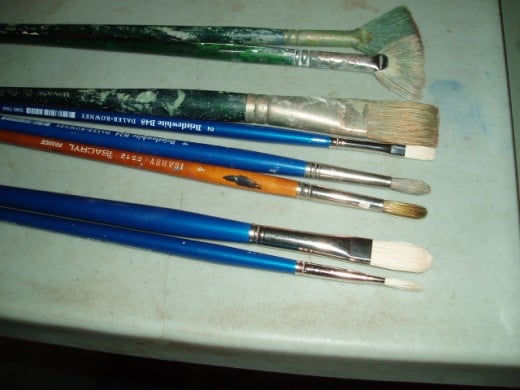
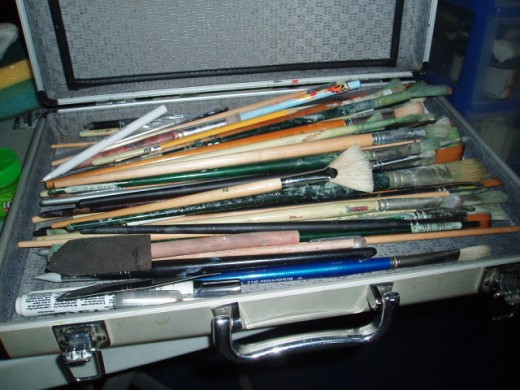
Brushes
Brushes.
For oil painting, you really need hog’s hair brushes, stiff, and tough, that will withstand the rigors of working on a canvas surface. Some canvas texture is quite abrasive and will break the ends off your brushes quite quickly, so old brushes can be used as workhorses for covering big areas with colour.
You do need a good selection of sizes and shapes; the main shapes being; fan shaped, square ended, round and filbert, which is shaped a little like the end of your finger. For fine work I use a synthetic bristle brush, cheap enough to throw away when it goes out of shape.
I clean my brushes with turpentine substitute, but never use this to thin your paint or you may find it leaves a white powdery deposit on the surface that may not appear until weeks after you have used it.
There are a number of low odour thinners which I would recommend to try to find. The American paint supplier Bob Ross inc have in their range of products a very good odourless thinner which can also be used on your canvas without problems.
Paints
Paints
In Britain, we have two main suppliers of oil paints; these have been about for many years.
I prefer a company named Winsor Newton; I like their pigments and the texture of their paints from the tube. It is a personal thing but there transparent sap green and one or two other have such a vivid and lively colour. I also use most of the Bob Ross range of colours although used out of the usual format of a BR style painting they can be very wet. There are a few others, but you will only get what you pay for, buy some of these cheap imports from China that are sold by supermarkets and you will get what you deserve. You can’t make a good painting with inferior materials.
Canvas
Canvas and painting surface options. Which surface should I use?
Again, it is a personal thing, and not until you have painted several pictures and used different surfaces will you be able to answer this one. There are dozens of options and it is worthwhile talking to other artists, who will all know best and what is the perfect surface.
Without doubt the cheapest surface is the back of a piece of hardboard, which I used several times when I was a student in the 1960’s.
Oil Board., is thick card usually with one side rolled to give it some texture.
Canvas Board. Is usually canvas stretched over card and glued to it.
Stretched canvas. This is probably the most popular amongst serious and more experienced artists.
Different companies offer different types of canvas, try not just to buy on price. I like an Irish linen canvas, which is soft and responds to your brush strokes, you feel to be caressing the painting.
Buy pre-stretched and primed canvas it saves a lot of hassle. Check the canvas for flaws before you buy it, some cheaper canvas have slight flaws in the weave, and it may not seem too bad when it is only with primer on, but can bet your bottom dollar that it will be somewhere really obvious once you have your paint on it. Different cloth has different weaves and it can make a difference to your finished work. May advice is don't buy canvas on line because you can't check it.
There are also lots of shapes, for a beginner I recommend you stay with a 6x4 ratio,
12x8, 18x12. You may find square difficult because we are used to looking at pictures, photos etc in this ratio, what was called 'n' print size.
Photo below you can see the amount of canvas that I keep in stock, just in case I need a different shape, my favourite size is 24x18"
I have a friend with a framing business that churns out frames whenever I need one.
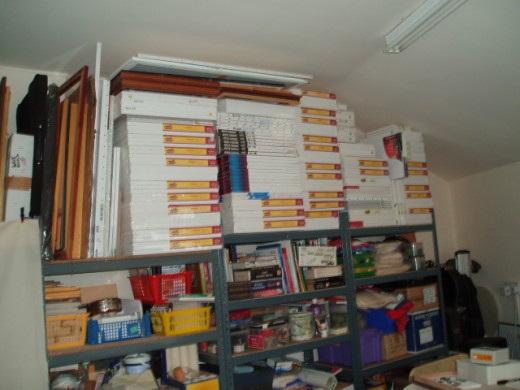
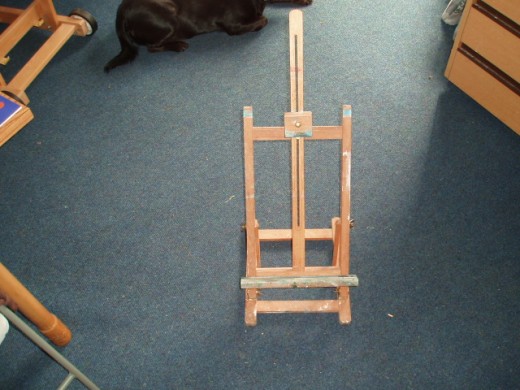
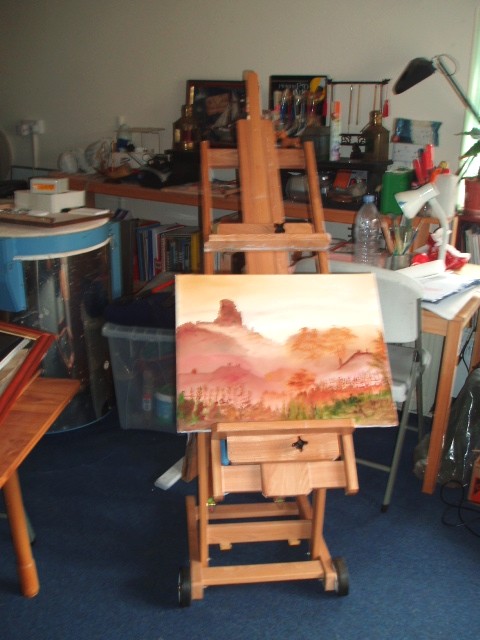
Easels
Again there is a massive amount on the market, it is a common sense sort of thing. I have about six different ones including field easels that include a carry box and adjustable legs. Go for something cheap and cheerful to begin with, but make sure it will do what you want.
A good one can be expensive, buy the best you can or put it on your birthday wish list and hope someone buys it for you.
Other bits and bobs.
Bits and bobs
Rags by the bucket load you will need, once used just chuck them in the bin. An assortment of pots and tubs to clean and hold your brushes, take a tip, when your brush has paint on it and you want to keep it awhile put in bristles up in a jar or it will roll off the table and onto your carpet in a jiffy, not good for marital relationships.
Pencils and a good clear plastic rule, not ruler that is the queen God bless her. For real fine work I have a magnifier on an extending arm. Plenty of spare paper for planning and making your design on.
Where do I start?
Whatever the subject you choose there are a few basics to follow. If you are working from a postcard or photograph don’t try and get an exact copy, you might as well stick with the photo in that case. Imagine the scene under different weather conditions, at a different time of day. If there are people or animals in the picture, what about moving them to make a more interesting picture? You can change just what you want, it’s your picture no can say that it is wrong. Obviously if you are including a well-known landmark then it has to have at least the right shape. Taking out a tree or moving it is the fun part of painting and drawing.
Once I have decided on the subject I like to have a long think about it, I think about the story of what is happening the sounds and smells of the scene.
In this picture, the girls are Whitby bait girls, making their living from baiting the thousands of fishing hooks with muscles. The inspiration for this was a famous photograph by the nineteenth century photographer Frank Meadow Sutcliffe (Hon. F.R.P.S.) between 1875 and 1910 who had the foresight to capture the world at that time for posterity. Over the years thousands of visitors to Whitby and that area will have sent this scene home on a postcard.
First Steps
I’ve not copied it exact, I rearranged the girls to suit my painting, I’ve also changed their faces, and used portraits of girls from some of Renoir’s paintings. The chap in the back is Claude Monet from another Renoir. In the original, the girls are hardly aware of the camera or so it seems, but I turned my girls a little so that the viewer seems involved in the conversation. I also gave the lady in the doorway a little dog curled up at her feet, for no other reason than I think it should be there.
First, I divide up both canvas and picture so that I can enlarge it without having to take measurements. Divide them both in half and then in quarters along both x and y-axis, if certain areas have lots of detail just subdivide them as many times as you need.
In the first painted sketches below you can still see my lines to split up the canvas. Using thinners I roughly added a few key features to start building the scene.
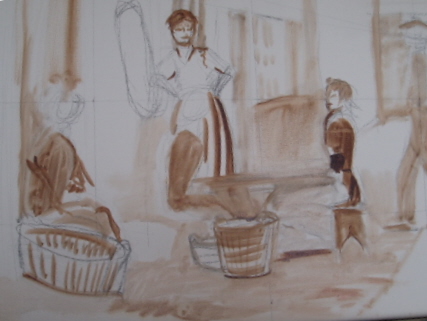
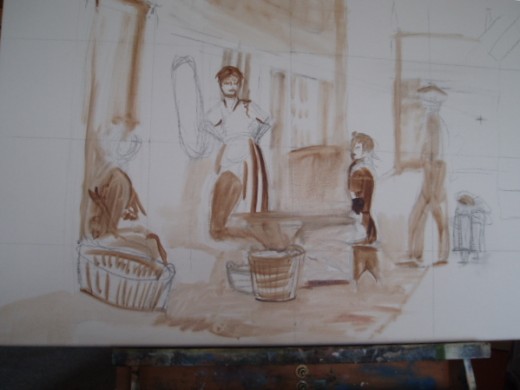
Add more detail
Now below you can see that I have continued to build the picture making sure that the background perspective kept in the same plane as the foreground figures; it is very easy to suddenly find that doorways are too small or large and appear to be at a strange angle all because the perspective is not correct.

more detail
Here is a close up of the girls as I developed the picture.
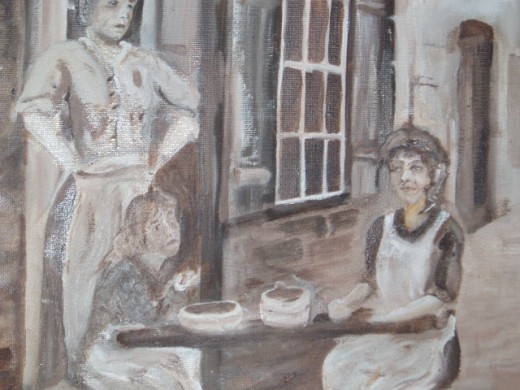
The colours I've used to make the seppia types tones are; Van Dyke Brown for the very dark areas, Raw Umber, for the richer tones, Burnt Umber for the mid tones, and of course Titanium white for mixing colour and Zinc white to add reflection.
the canvas was a 30"x24" pre-streched with a medium course weave.
I like painting with this very limited pallet, because it is a challenge at times to make it all work. I also found that they sold very well and people enjoyed the nostalgic scenes.
Below are the last photos that I took, a lady bought it off my easel and I never got chance to take a picture of the finished effort. My studio was open to the public at that time, and I also sold artist materials too. Now my private studio is my own space, except on a Thursday when a few old art buddies come over and we have a good chin wag and throw a bit of paint about too.
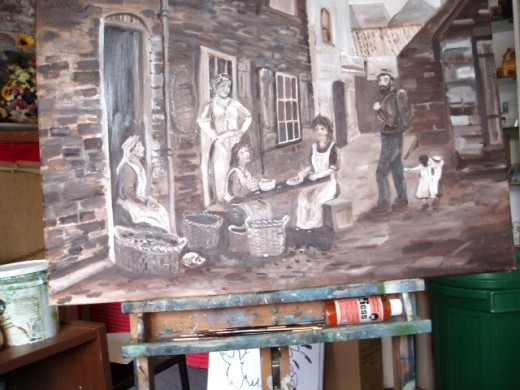

- The Ghost Of A Warrior, short story Set in Ancient Britain
A historical short story. The story of a boy's journey into manhood. Most of the illustrations have been drawn and painted and photographed by the author.
My old studio
Click thumbnail to view full-size








